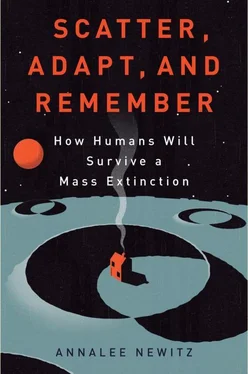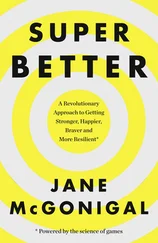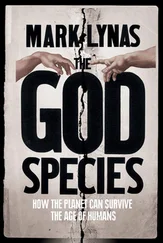When I arrived in St. Louis a couple of months later, Pakrasi told me that he’d been fascinated by photosynthesis his whole life. “Every plant is a fantastic power reactor,” he explained. “Let’s learn from nature how to do that ourselves. Let’s have a perpetual synthetic plant that makes energy.” He and his colleagues at I-CARES are convinced humans could be using algae to fuel our cities in a century. The cornfields outside Pakrasi’s office window would bloom with photosynthetic antennae, or superefficient solar cells atop flexible structures, their light-consuming faces twisting to follow the path of the sun across the sky. Energy breweries the size of local beer megacorp Anheuser-Busch would be packed with vats full of bubbling blue-green algae that could be used in batteries or other chemical processes. Humanity would survive the fossil-fuel age by drawing energy from cyano. But before Pakrasi’s visions can come to pass, scientists need to figure out how photosynthesis works.

In his lab at Washington University in St. Louis, researcher Himadri Pakrasi shows another researcher some of the cyanobacteria colonies that have been engineered to produce higher amounts of hydrogen. (illustration credit ill.8)
Despite what you may have learned in high school biology, photosynthesis isn’t simple. In fact, it’s a chemical process that follows some seriously weird and mysterious pathways—some of which we still don’t understand. Another Washington University professor, the physicist Cynthia Lo, flipped her laptop open to show me her work on photosynthesis, glanced at some diagrams, and looked momentarily exasperated. “You know why most plants are green?” she asked rhetorically. “It’s because they’re terrible at capturing and absorbing green light. So they capture blue light, but they reflect green. And that’s what you’re seeing in this bright green algae.” Lo is one of Pakrasi’s research collaborators at I-CARES, and the principal investigator on the Photosynthetic Antenna Project. She’s working out the basic science that might one day lead to Pakrasi’s vision of superefficient solar cells collecting light to power the city of St. Louis. Lo clicked through some diagrams of how photosynthesis works at the atomic level, photons colliding with molecules called pigments to produce energy.
Then Lo returned to a theme that would come up a lot in our conversation: cyano are actually terrible at reaping the benefits of photosynthesis. Not only are they missing out on green light, but they only convert about 3 percent of the light they harvest into energy. By comparison, commercially available solar cells convert about 10 to 20 percent of incoming light into electricity. But, Lo said, today’s solar cells can only harvest a small percentage of the light wavelengths that cyano collect—so the bacteria are still way ahead of us in that department. But not for long, if Lo and her lab have anything to say about it.
Lo’s research into the physics behind light capture could help engineers build solar cells that replicate the molecular smashup we see during photosynthesis. Engineers call this biomimesis, or the practice of imitating biological forms to make artificial systems work as efficiently as living systems do—or more efficiently. “A biological system is intriguing because nature has optimized it,” Lo explained. But it’s not optimized enough. Algae harvests light really efficiently, but doesn’t convert it into energy efficiently. Solar cells are efficient at making energy but not at light harvesting. Ultimately, Lo’s goal is to figure out what it would take to develop what she calls a biohybrid solar cell that combines the light-capturing abilities of cyano with the energy-conversion abilities of existing solar-energy technology.
By trying to copy the energy reactors inside each cyano cell, Lo and her team are learning the best possible lesson they can from this mega survivor. They are trying to diversify our energy supply, creating new ways for us to gain energy from the environment so that we can survive long-term with a sustainable electrical grid. It may be decades before we crack the code on photosynthesis, but this ancient organism could guarantee a better future for the planet—just the way it did billions of years ago.
Turning Coal Plants into Cyano Breweries
Another of Pakrasi’s collaborators is working on a strategy to take us from a world run by coal to one powered by plants. Environmental engineer Richard Axelbaum, a wiry man whose office desk is decorated with angular chunks of coal, is interested in the near future of alternative energy. Pakrasi and Lo are looking perhaps half a century ahead, while Axelbaum looks just 10 to 20 years out. He has to be a pragmatist. That’s why he works on “cleaner coal” technology and carbon sequestration, the practice of sustainably disposing of coal’s greenhouse gas by-products.
One of his projects is a prototype coal-combustion facility called the Advanced Coal and Energy Research Facility, located in a huge, high-ceilinged warehouse on the Washington University campus. The facility sustains tanks of healthy algae using a by-product of coal processing. From a viewing gallery two floors above, Axelbaum showed me a tangle of thick pipes, cylindrical tanks, and a grid of shelves packed full of bubbling aquariums. Axelbaum pointed to a tank that looks like an outsized metal barrel turned on its side. “That’s the coal-combustion chamber,” he explained. Unlike typical coal-burning plants, this chamber burns the coal in a pure oxygen environment. As a result, the only by-products of the process are “cleaner” because they’re composed almost entirely of carbon dioxide and ash, with no nitrogen compounds mixed in. “Every generation has had its clean coal,” Axelbaum remarked. Early twentieth-century facilities improved on the extremely dirty coal-burning practices of the nineteenth century, for example. And now he’s hoping that we can improve the process even more, bringing us one step closer to truly clean energy.
Axelbaum’s finger followed a thick duct emerging from the combustion chamber. “That goes to a white-ash capture chamber,” he said, identifying a big, rectangular bin. Normally, coal ash is stored in large open-air ponds, which can cause environmental damage. “Our hope is that all this ash can be put to use, whether in concrete or new kinds of conductive materials,” Axelbaum said. As for the carbon dioxide? “That’s going over to the algae tanks.” Axelbaum pointed at pipes leading to the aquariums. The algae absorb the carbon, thriving on the gas. Axelbaum’s oxy-coal combustion could be feeding (literally) the next generation of superclean energy production.
A couple of years before I visited Pakrasi, his team made an incredible breakthrough. They were working with a mutant strain of cyano that releases hydrogen instead of oxygen during photosynthesis, and they managed to coax the algae to produce ten times more hydrogen than other strains had. Hydrogen is often called a clean fuel because when it’s burned it releases mostly water. Hydrogen fuel has been used for rockets, but its production is too expensive for consumer markets. Still, its widespread use in every home is part of the future of cyano-powered energy that Pakrasi, Lo, and Axelbaum dream about.
Imagine a world where brewers grow hydrogen fuel by feeding cyano with the carbon dioxide released from burning coal. The Pakrasi lab’s cyano also consumes glycogen, a by-product of biodiesel production. So basically, these algae cells are eating two harmful by-products of energy production to produce a form of fuel whose consumption releases almost no toxins at all. “They give you a lot of bang for your buck,” Pakrasi said with a laugh. Eventually, we could wean ourselves off coal and make the leap into a cyano-powered world full of new kinds of green fuel.
Читать дальше







![Аннали Ньюиц - Автономность [litres]](/books/424681/annali-nyuic-avtonomnost-litres-thumb.webp)





